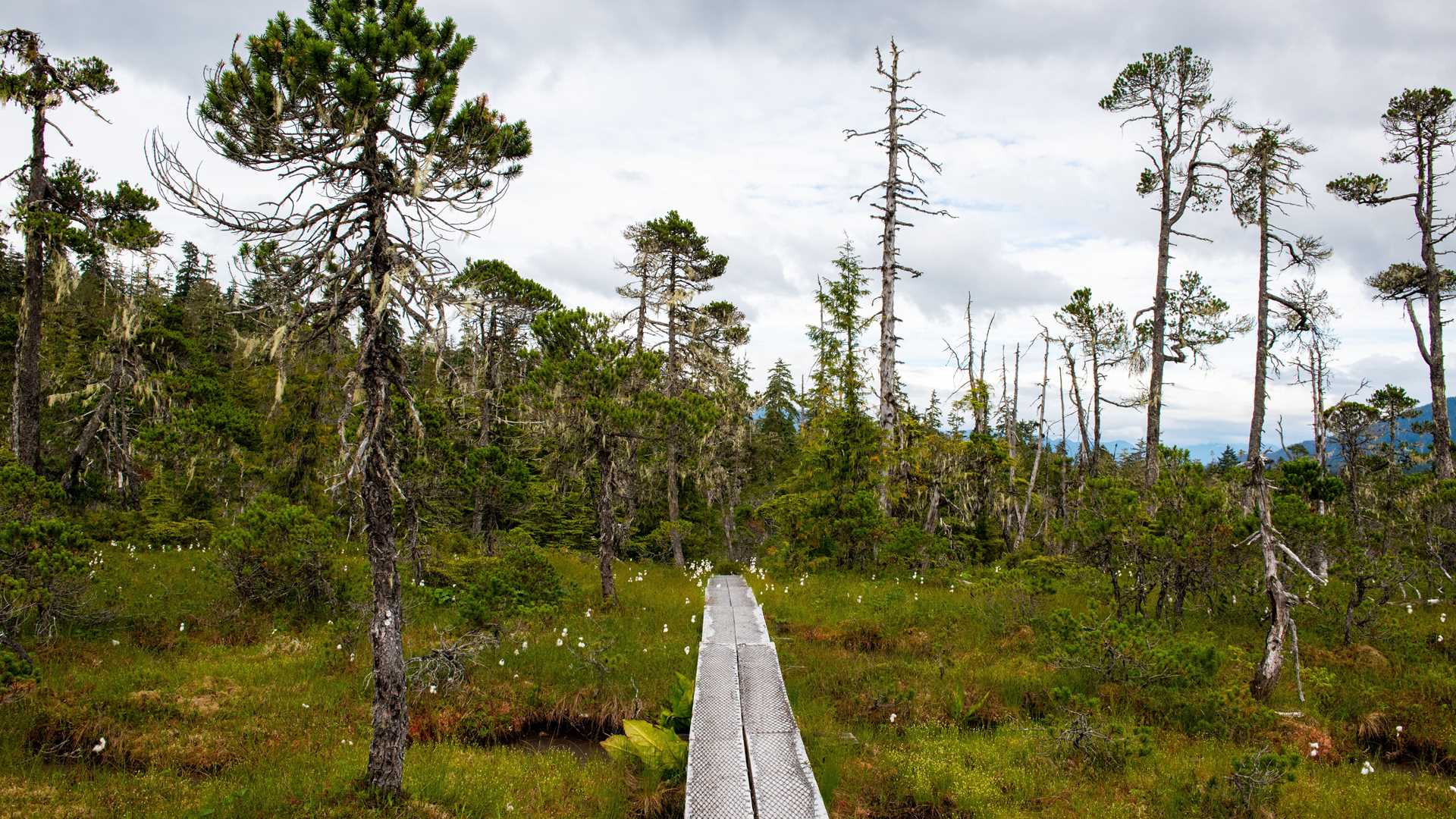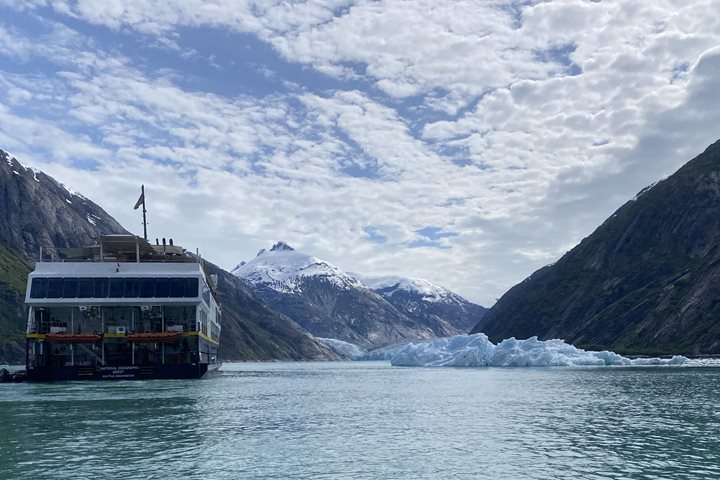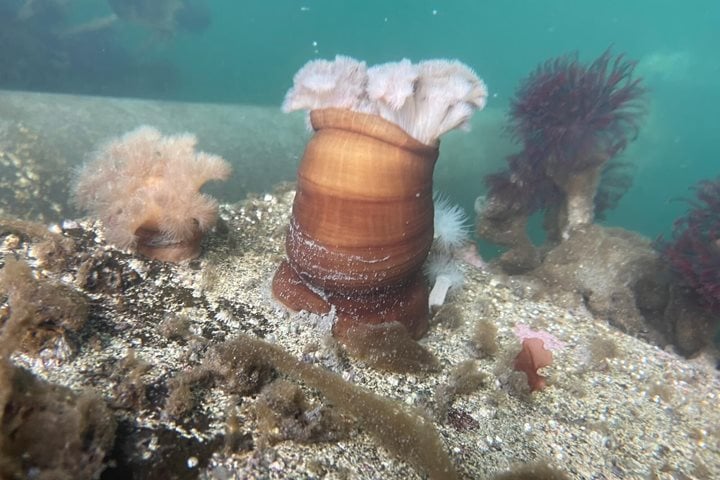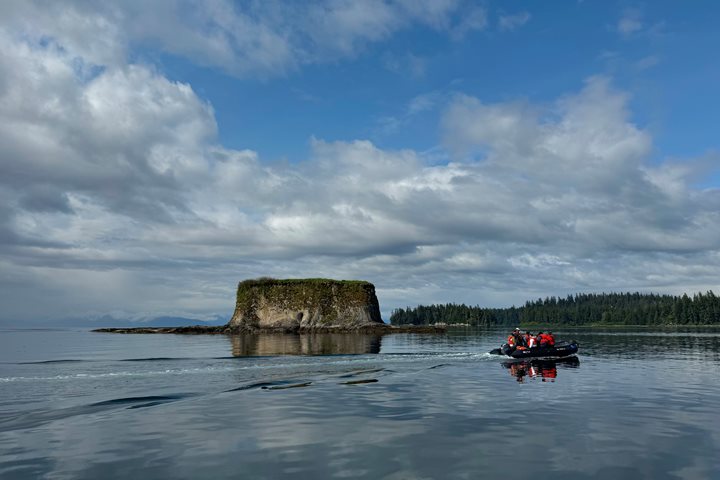We spent an active day exploring the area around Petersburg, a fishing village with Norwegian roots. Activities included short and medium walks through the muskeg, a bog with unique plants, including dwarf shore pine trees and carnivorous sundew plants. A longer bog walk was offered during the afternoon.
There were three rounds of guided Zodiac tours and bike rides offered during the morning and afternoon. The bike rides covered 5.5 miles roundtrip through town and along the coast with a short stop at Sandy Beach for photos. Later, our young Global Explorers participated in a plankton tow, collecting a water sample from 30 feet deep to examine under a microscope and found thousands of invertebrates!







